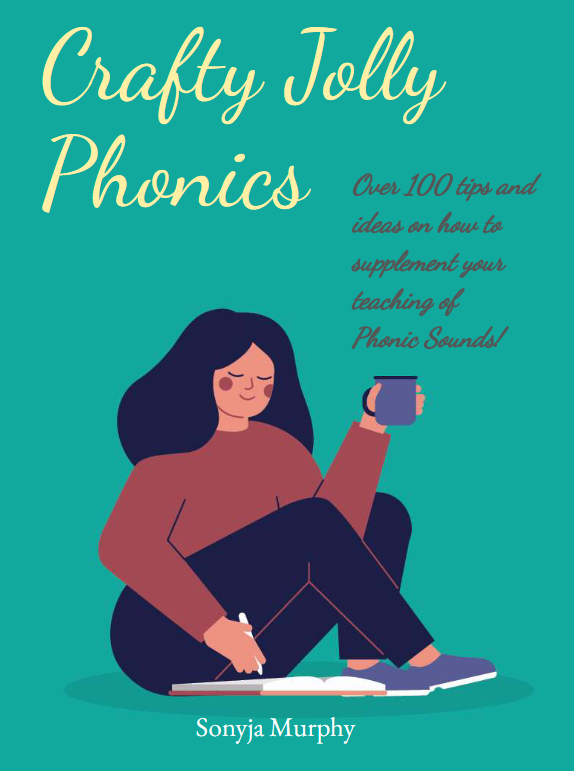Young children enjoy crafting and taking the craft they made in class home to show everyone. The craft is a physical representation of the new sound they learned that day. Activities and games are another way of consolidating upon children’s letter sound knowledge and skills. Let’s play and learn, learn, and play.
It’s fun crafting with young learners as we move through the Jolly Phonics program of sounds. Training young learners to look for ‘letter sounds’ learned in class or at home, as they go from ‘a to b’ brings language learning to life. Learning our sounds becomes an enjoyable and memorable experience.
With Jolly Phonics, each sound has its own action, song, and associated story. This ‘many pathways to the brain’ approach provides equal opportunities for all types of learners to make connections, whilst learning and playing.
Below, you will find activity, craft and/or game suggestions that you can use when teaching each of the 42 sounds, as taught using the Jolly Phonics program.
The suggestions are often interchangeable. For example: the body part movements suggested for the /s/ sound below could be applied to other sounds too.

Group 1: s/a/t/i/p/n
Let’s begin with the first Jolly Phonics sound; the /s/ sound. Why not try forming the letter <s> with your elbow or your kneecap for that matter. You’re sure to see your learners amused by this activity. Can you ‘see’ the letter sound /s/ around you?
Why not try cooking some spaghetti and shaping it into the letter <s> or making a long spaghetti snake. You could use food colouring to make snakes in varied colours.

Perhaps you’ve made an /a/ ant with pipe cleaners, printed patterns with apple slices or made an astronaut craft from old toilet roll tubes, but have you ever spent time ‘cloud gazing’ to see the letters in the sky!
Maybe you will see the letter <a>. Rather than having real ants crawling up your arm, you could just pretend that ants are crawling up your arm as you brush them off, whilst making the /a/ sound. Your young learners might enjoy playing the fun arrow game where you hide, but as you find your hiding place you draw arrows on the ground with chalk, so your friends have a chance of finding you!

After learning the /t/ sound you could play a game of real tennis or alternatively make a tennis racket craft or a pretend telephone or maybe even have a teddy bear picnic. Did you see some random <t> letter formations around today? Why not go for a nature walk and see how many leaves and branches you can see that simply overlap in a letter <t> like formation.
The letter <i> formation is everywhere: from a grain of rice, to a toothpick, a pin, or a match. You could use an ink pad and stamp the hands of your young learners (parent/school permitting of course). Just like ‘Inky’, your young learners will surely see how difficult the ink is to wash away.
Playing and learning is fun!
How about making some inkblot pictures instead, or an igloo using cotton wool balls and a paper bowl or examining garden insects with a magnifying glass. Playing and learning is fun! If you happen to live in Thailand, you might even try eating those insects too! Ahh
From penguin and panda crafts to pumpkins and peacocks, the letter <p> is the perfect sound to learn. Did you try lighting a candle on a cupcake and puffing the candle out, only to light it again and again. Alternatively, just putting your index finger close to your mouth, you will feel the puff of air.

The letter <p> is the first letter we have looked at so far which goes under the ground to see what it can find. Can you find a potted plant hanging in your garden where the hanging hook is almost a letter <p> in shape? Take a walk about and see where you ‘find ‘see’ the letter sound /p/ and think about what it could mean?

From paper airplanes to noodles or nests made from real natural materials, the letter sound /n/ is never (not) interesting. Let’s take another nature walk to examine real nests. Have you ever seen the incredible natural architects that birds can be? Whilst outside, your young learners will be happy to fly around pretending to be airplane engines making an /n/ sound. Learning through play creates life-long learning enthusiasts.
To read some more fun ideas and tips to supplement your teaching of Phonics then look no further than my e-book available at https://www.tes.com/teaching-resource/phonic-sounds-many-teaching-tips-and-ideas-13009031
All photos used in this blog have been taken with permission from https://www.freepik.com/
